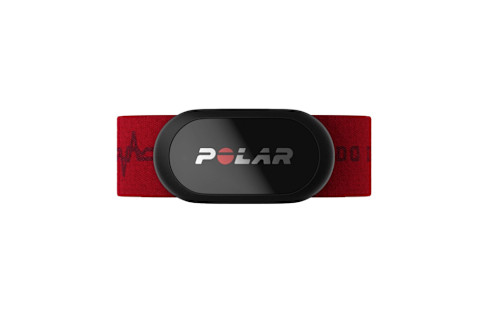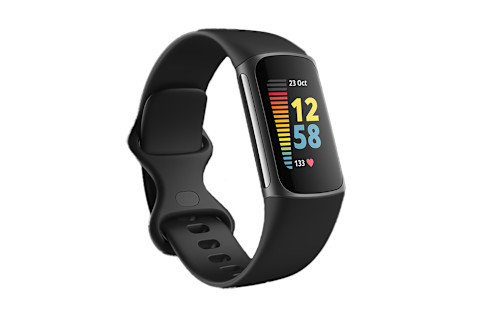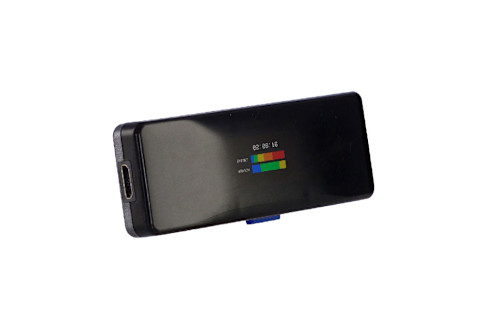
The average heart has about 100,000 beats a day, each providing a glimpse into your stress levels, environmental conditions, and cardiovascular health. Wearing a heart rate monitor can give you a better understanding of how your heart is functioning and how to adjust your workouts, recovery, and lifestyle accordingly.
Todays monitors go beyond data collection, synthesizing information to deliver insights and recommendations. After much testing and deliberation, we rounded up the five best heart rate monitors on the market today to help you never miss a beat.
- Best for exercise: Polar H10
- Best for sleep: Oura Gen 3
- Best band: WHOOP 4.0
- Best budget: Fitbit Charge 5
- The next-gen: Frontier X2 Chest Strap
What do heart rate monitors measure?
The most basic heart rate monitors will measure how many times your heart beats in one minute, with 60 to 100 beats per minute being a healthy range for most people.
The most accurate way to track heartbeat is with a chest strap. These straps have sensors that pick up the electrical signal directly from your heart. Since they usually sit over your myocardium (heart muscle), they're less likely to be thrown off by "artifact1"—or movement that interferes with heart rate readings.
Watches, bands, and rings measure heart rate less directly and are more likely to pick up on artifact as your arm moves around. Unlike chest straps, these work by shining a light to pick up the pulse of your blood vessels and using that to compute your estimated heart rate. This makes them slightly less accurate than chest straps2, according to clinical research.
In addition to basic heart rate readings, some monitors also measure your heart rate variability (HRV), or the timing between each consecutive heartbeat. "Heart rate variability is a measure of how much stress your nervous system is sensing," Michael Twyman, M.D., a board-certified cardiologist, explains.
"When the autonomic nervous system is in balance, there tends to be a higher variability in time between heartbeats," cardiologist Bradley Serwer, M.D., FACC, previously told mindbodygreen. "When the autonomic nervous system is out of balance either due to increased stress (physiologic or psychological), illness, or autonomic dysfunction, the variability between heart rates decreases."
HRV is a more sensitive metric than heart rate, and it's constantly changing based on how much you're exercising, how well you're sleeping, if you're getting sick, etc. When your HRV takes a sudden dip, it's a signal that your body is in a fight-or-flight response. Here's a chart of average HRV scores (though it's a highly individualized metric).
In addition to measuring your HRV, some devices might also connect to apps that tell you how to optimize it. Next-gen heart rate monitors can also measure metrics like heart strain3 and let you read your ECG in real-time.
Here's a recap of what different types of heart rate monitors will measure:
Basic:
- Heart rate (beats per minute)
Advanced:
- Heart rate (beats per minute)
- Heart rate variability
- Accompanying apps that help you optimize heart function
Next-gen:
- Heart rate (beats per minute)
- Heart rate variability
- Accompanying apps that help you optimize heart function
- Heart strain
- Continual ECG
Best heart rate monitors
A heart rate monitor isn't like a scale or stadiometer: There's more than one way to use the measurement tool.
While weekend warriors might wear them during exercise to maximize performance and track results, those who are more focused on recovery might opt to wear them to bed. And while some people need their heart monitor to deliver a basic reading, others might be more intrigued by the bells and whistles of a more advanced model.
No matter where you fall on this spectrum, we've identified the five best trackers out there to suit your needs.
Best for exercise: Polar H10
While wristwatches can measure your heart rate accurately up to a certain point, Twyman notes that they start to fall short once you reach higher heart rate zones. "If you really want to know what your heart rate is at peak activity, the chest straps are better to utilize," he says.
Polar has long been a leader in heart rate monitoring (they launched their first chest strap back in the 1970s), and their Polar H10 strap is the most accurate to date, while still being pretty affordable.
According to testing by Polar, it can measure heart rate within two milliseconds of accuracy 92.9% of the time during running, 99.3% during cycling, and 95.3% during weight training. The chest strap is fully waterproof down to 30 meters, so it can be used for swimming as well.
You can sync your Polar H10 to your phone, treadmill, bike, or smartwatch using Bluetooth to monitor your heart rate in real time. You can also review your data in the accompanying app.
One common complaint of all chest straps (not just Polar's) is that they can be uncomfortable to wear. But for tracking a quick HIIT workout that dips into Zone 4 and Zone 5, you really can't beat its accuracy.
Best for sleep: Oura Gen 3
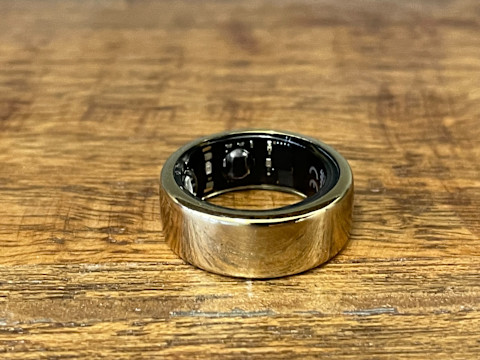
If you're hoping to wear your heart rate monitor to bed, comfort will be key. And the Oura ring is far and away the most comfortable tracker around—no more noticeable than a wedding band.
It packs some impressive sensors into such a small package, and the Oura ring has been shown to deliver highly accurate resting heart rate and heart rate variability readings in laboratory testing.
The accompanying Oura app helps you decipher your readings and see how different activities affect your rest and recovery scores over time. It also alerts you when your nightly HRV score was low, signaling that you might be getting sick or need to take a rest day.
It also collects data on how long it takes you to fall asleep and how long you stay in different sleep stages, providing a snapshot of overall sleep quality.
Another nice touch: The Oura ring has an Airplane Mode functionality, so it can continue to collect and store data even when Bluetooth is disconnected. Twyman notes this is a good feature for those concerned about EMF radiation.
"I personally don't wear any wearables that would still be in Bluetooth mode while I'm sleeping," he says. "I put it in airplane mode, let it record locally, and download the data the next day."
Best band: WHOOP 4.0
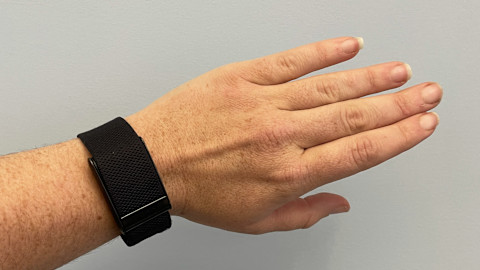
Looking for a comfortable band that you can wear daily, while working out and at rest? The WHOOP is a solid option. The sleek, faceless band measures your heart rate during exercise, sleep, and recovery to give you a holistic picture of how your ticker is ticking throughout the day—and how factors like stress or caffeine affect it.
You can monitor your heart rate and HRV on the accompanying app and program your wristband to send you alerts when any sudden changes occur. Your device will also deliver a score of your sleep performance, recovery, and physical exertion daily. Smart features like these are why the WHOOP earned a top spot on mindbodygreen's list of the best HRV monitors earlier this year.
The WHOOP app also serves up data on your skin temperature, blood oxygen levels, menstrual cycle, calorie burn, and much more (some of our testers actually complain that the information can get a little overwhelming).
While the WHOOP hardware (a black wristband) is free, you need to pay for a membership in order to use it. This costs $30 a month, $239 annually, or $399 for 24 months.
Best budget: Fitbit Charge 5
The Fitbit Charge 5 is an affordable smartwatch that's solid for basic heart rate readings.
You can check out your heart rate at any time of day on the watch's small touch screen. During exercise, the watch can show you when you're climbing into higher heart rate zones. You can also program it to send you alerts when your heart rate goes above or below certain preset numbers. (Just remember that these readings are not 100% accurate, so take them with a grain of salt).
Like the WHOOP and Oura Ring, the Fitbit app delivers a daily readiness score to give you a sense of how ready you are to perform based on your HRV and other metrics.
Our testers appreciate that the Charge 5 is easy and intuitive to use, and provides straightforward information on how your heart rate changes throughout the day.
The next-gen: Frontier X2 Chest Strap
Finally, for those seeking the Ferrari of heart rate monitors, there's the Frontier X2. This chest strap is pinprick accurate and comes with a bunch of high-tech extras: You can use it to measure heart strain (a measure of heart muscle damage), breathing rate, body shock, and more.
The strap's most impressive feature? It can record a live ECG for over 24 hours (that is, if you can stand wearing a chest strap for a whole day). You can access this on your phone for a detailed look at how your heart function fluctuates, as well as download and share this data with others. It could be a useful tool for those recovering from a cardiac event or who have arrhythmias and looking to share real-time information with their cardiologist. And for data nerds with some cash to spare, it can deliver some seriously interesting workout metrics.
"For somebody who's a biohacker or somebody who's really data-driven, I think this is probably the premier chest strap out there right now. But it has a premium price," says Twyman. At $549, it's the most expensive option on the list by far. It may not be totally necessary for the average person, but hey, it's still pretty cool.
Comparing the best heart rate monitors
| Product | Waterproofing | Price | Warranty | Battery Life | Tracks HRV? |
|---|---|---|---|---|---|
| Polar H10 | Up to 30 meters | $80 | 2 years | 400 hours | No |
| Oura Gen 3 | Up to 100 meters | $299 | 1 year | 5 days | Yes |
| WHOOP 4.0 | Up to 10 meters | $30/ month | 1 year | 4-5 days | Yes |
| Fitbit Charge 5 | Up to 50 meters | $140 | 1 year | 6 days | Yes |
| Frontier X2 | Up to 1.5 meters | $549 | 1 year | 1 day | Yes |
How we picked
- Features: The five monitors on our list all track heart rate, and most of them also collect data on heart rate variability (HRV). When taken together, these two scores can give you a solid picture of your cardiovascular health.
- Comfort: Some find watches uncomfortable, while others can't stand chest straps. We made sure to choose a ring, band, watch, and chest strap option so everyone could find a monitor that feels comfortable to them.
- Analytics: We prioritized monitors that come with apps to help you interpret your heart rate data and use it to live a healthier life.
- Cost: We included both splurge and save picks that run the gamut from less than $100 to $500+.
How to use a heart rate monitor
Once you have your monitor, how should you use it? We asked Twyman for his advice on how to get the most out of each reading:
To measure cardiovascular health at rest
Take a look at your resting heart rate—your heart rate while sitting or lying down—to get a sense of how you're doing in the cardiovascular conditioning department. As previously mentioned, most healthy heart rates fall between 60 and 100 beats per minute—and generally, the lower it is, the more fit you are (though some blood pressure medications can lower the heart rate).
"For the most part, if you're younger and you're athletic, a low resting heart rate is a good sign of cardiovascular function," says Twyman.
Another way to measure cardiovascular health with a monitor is to track how quickly your heart rate comes down after periods of exertion. Try doing a minute of sprinting or fast biking to spike your heart rate and then watch how quickly it drops; Twyman says going down at least 12 beats within the first minute after intense exercise is a good marker of cardiovascular fitness.
To monitor stress
While your average resting heart rate will stay pretty consistent from day to day, your heart rate variability scores could vary widely. If your heart rate monitor tracks HRV, keep an eye on it and look out for any big changes. Twyman notes that sudden dips in your HRV can tip you off that you need more rest and recovery.
"You can use HRV as kind of like the canary in the coal mine—the early warning detection that something has changed in your environment," he says.
To maximize exercise
Finally, your heart rate monitor can help you train more precisely and effectively. For example, you can use a chest strap to determine your personal maximum heart rate and then use that number to calculate your ideal heart rate for different exercise zones.
Warning: Don't go overboard
Why this matters for longevity
Heart disease is the leading cause of death in the U.S.4, and those who are cardiovascularly healthy can expect to live up to nine years longer5 than those who are not, according to recent research. Wearing a heart rate monitor can give you a sense of your unique baseline cardiovascular function and help you spot changes that may hint at bigger issues. Sudden fluctuations in heart rate or HRV may be a symptom of stress, infection, metabolic derangement, inflammation, or cardiac causes such as ischemia, a lack of blood supply to the heart. Tracking these kinds of metrics can help you identify areas for improvement so you can live a longer, healthier life.
FAQ
What is the most accurate heart rate monitor?
Chest straps are the most accurate types of heart rate monitors due to how close they sit to the heart and how they measure cardiovascular function. The Polar H10 and Frontier X2 are both extremely accurate chest straps.
What is the best heart rate monitor for running?
The Polar H10 and Frontier X2 chest straps will provide the most accurate heart rate data during exercise. However, wearing a strap can get annoying, especially on longer training runs. The Fitbit Charge 5 is a better pick for runners looking for a smartwatch. It has a sleek design, and it will give you continuous heart rate readings so you can comfortably stay in Zone 2 on easy runs and push it to your max during speed training.
The takeaway
Heart rate monitors can help you take control of your cardiovascular health—a key predictor of longevity. The Polar H10 wins out as our best highly accurate chest strap monitor for exercise, while the WHOOP 4.0 is our best band for everyday wear, and the Oura Gen 3 reigns supreme for nighttime tracking. Not only can these monitors give you a sense of how your heart is functioning; they can help you take steps to improve heart health, too.


